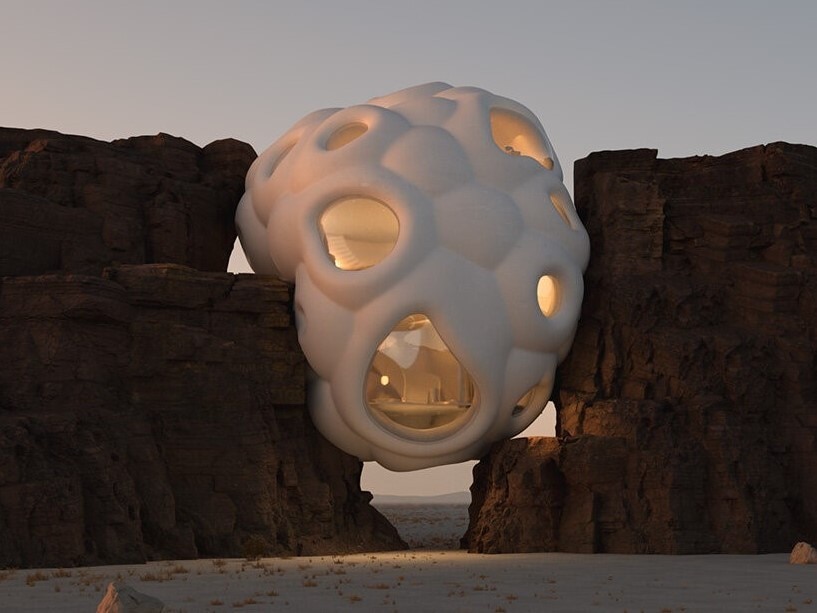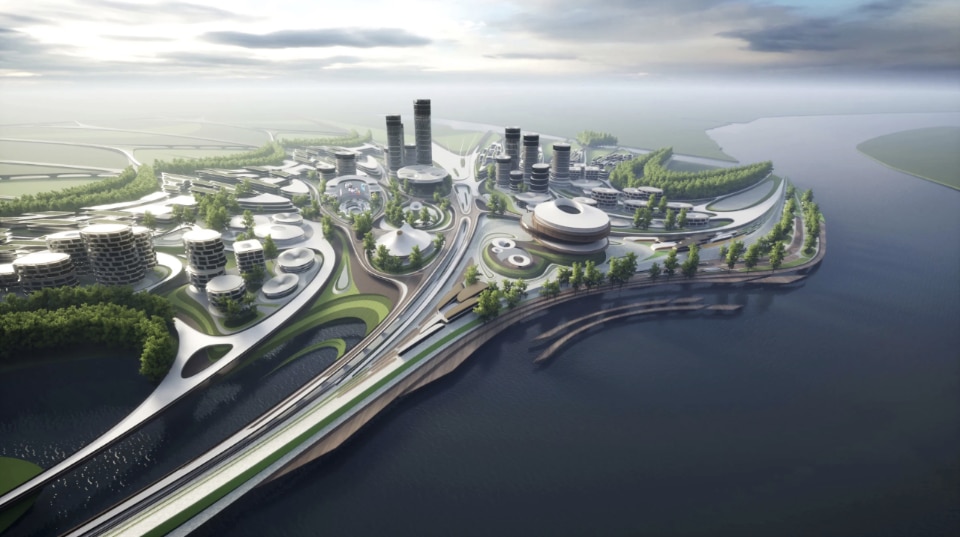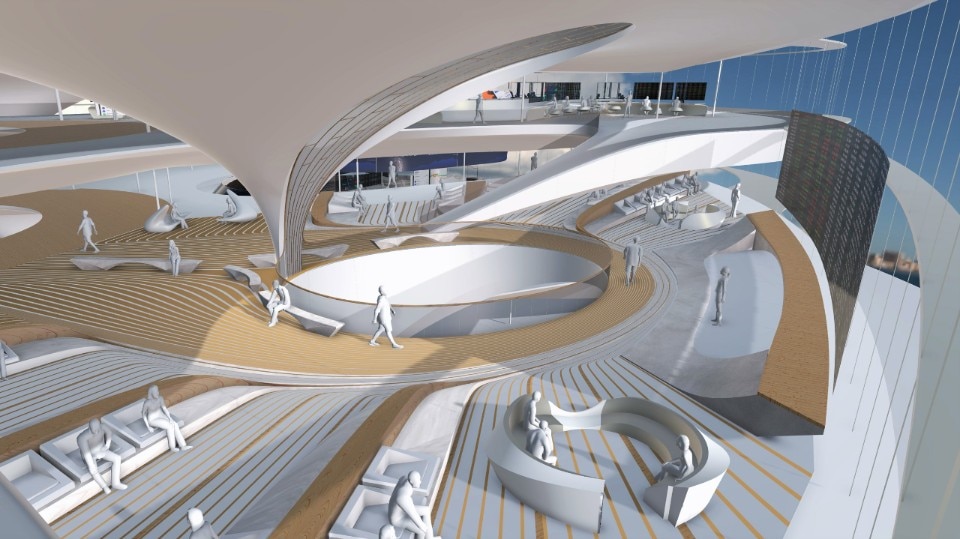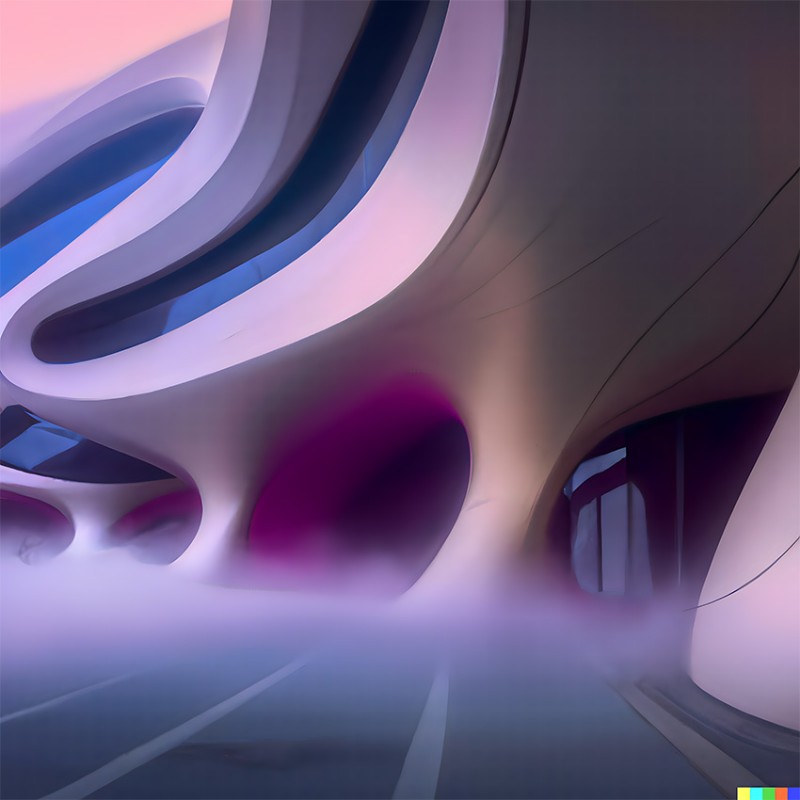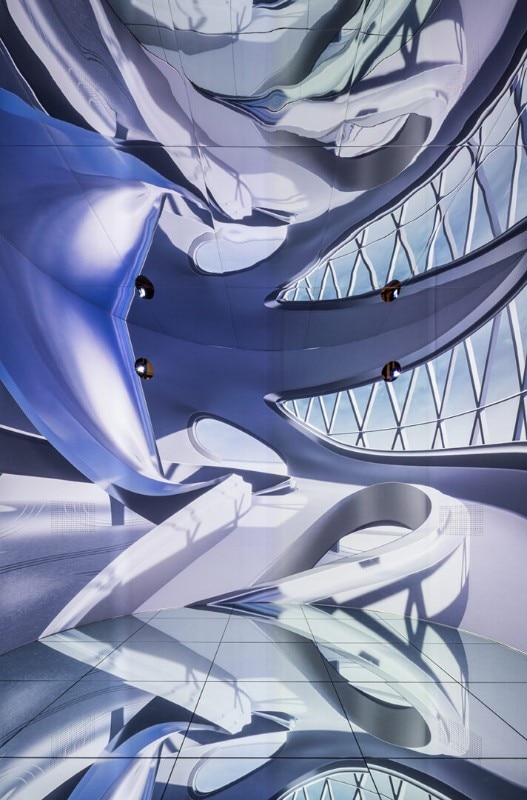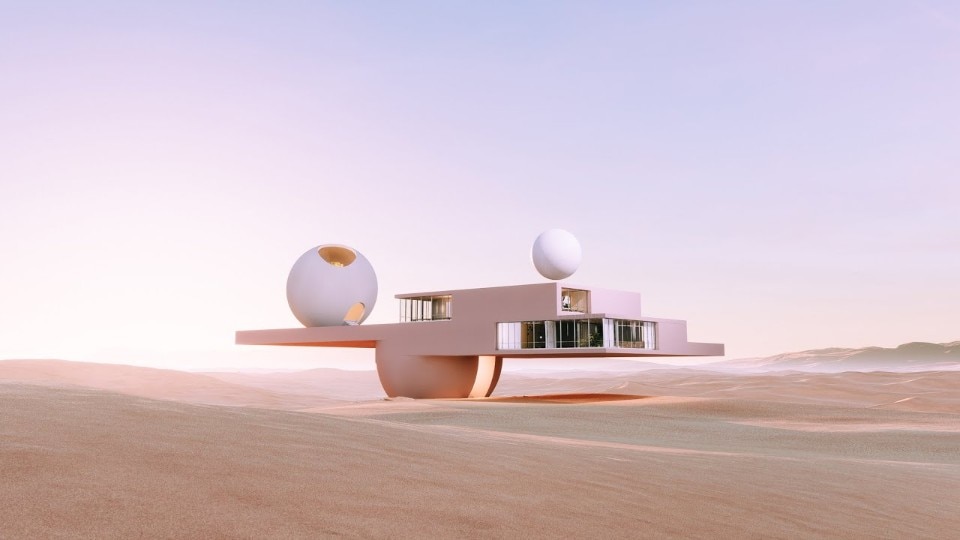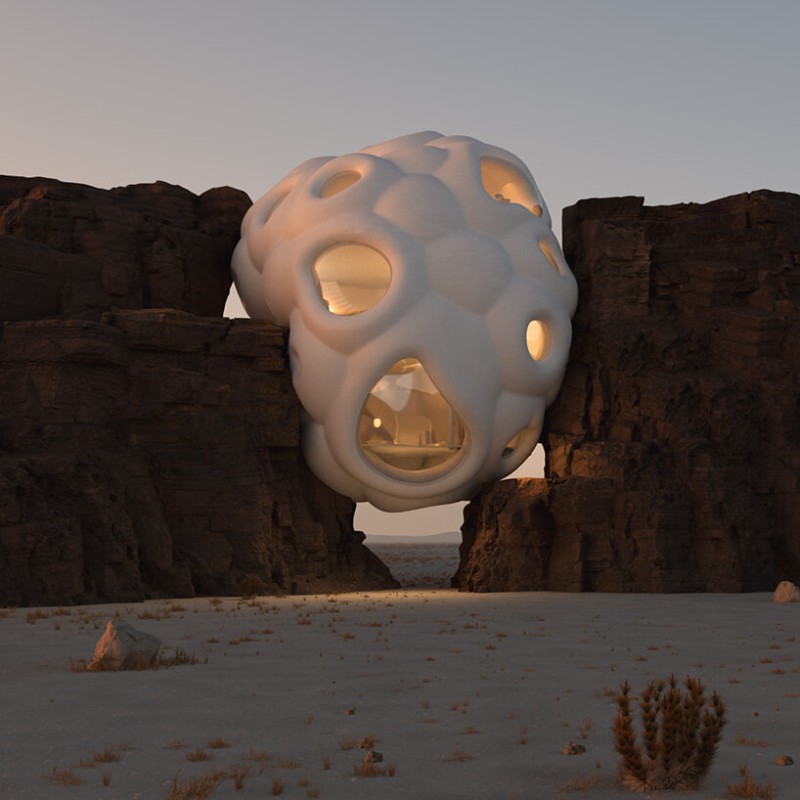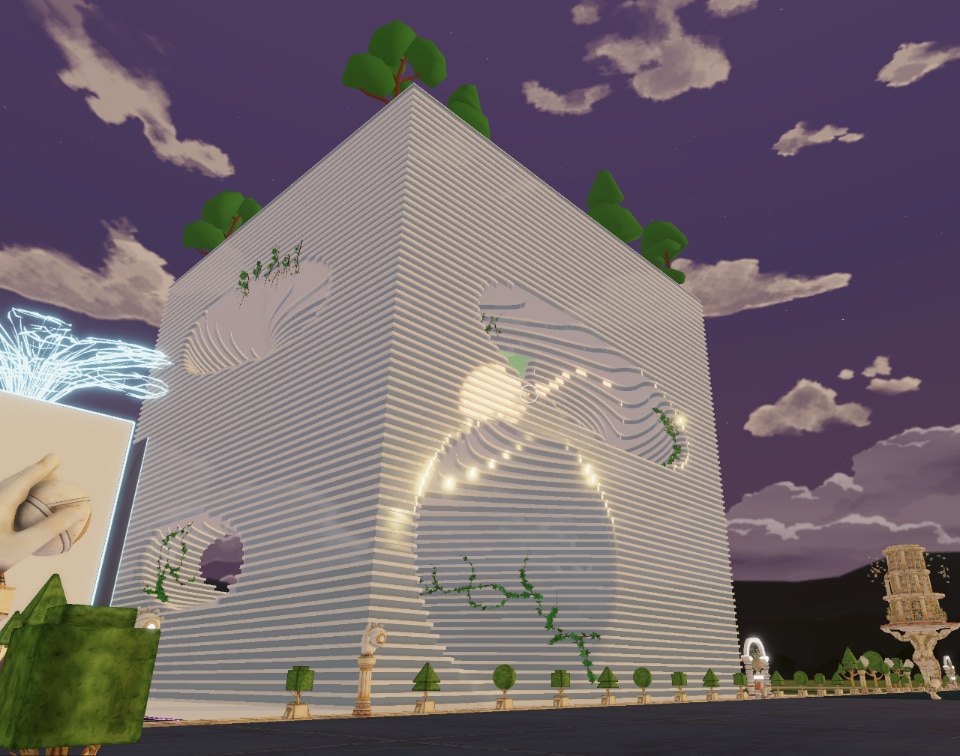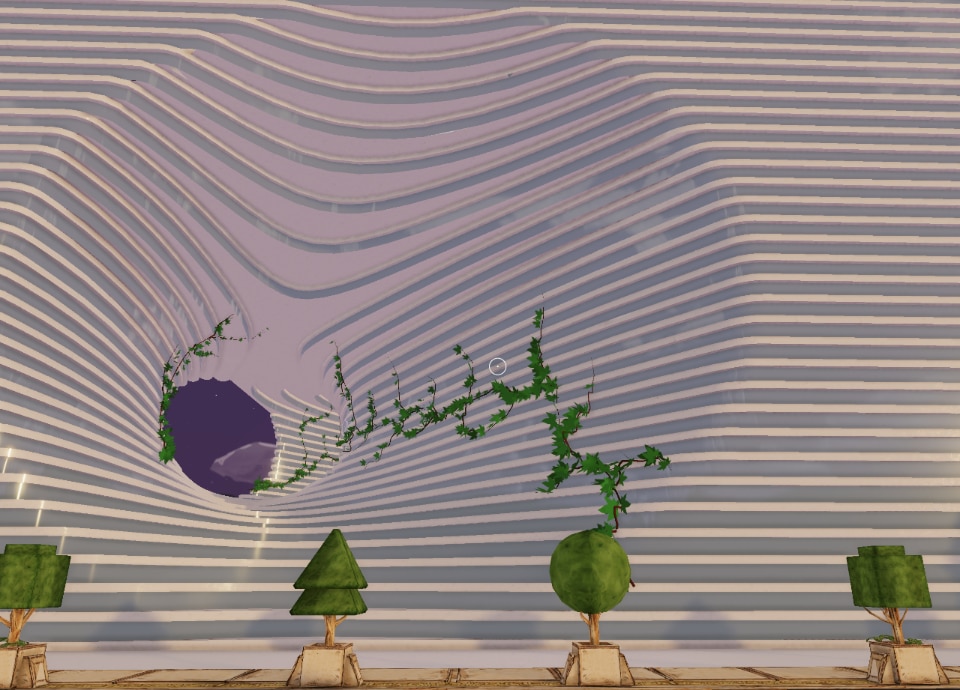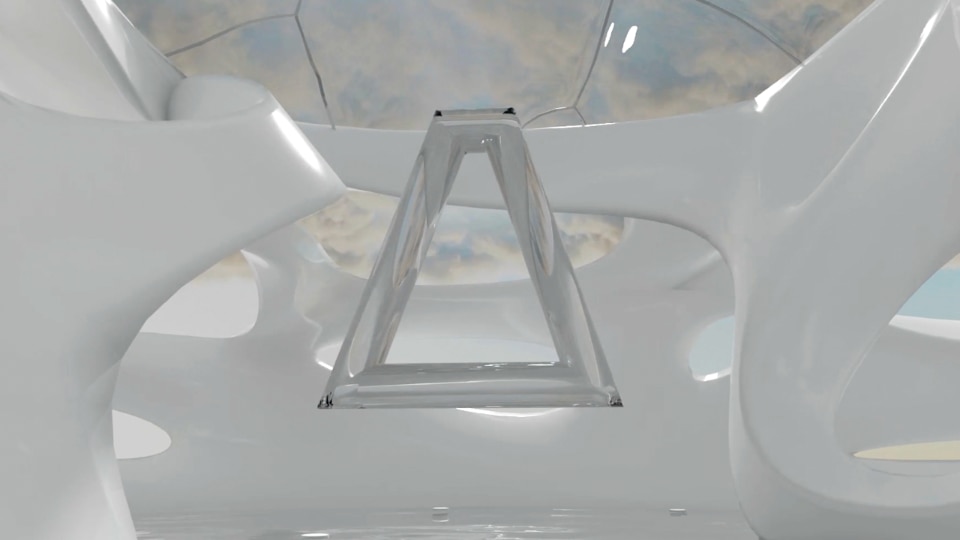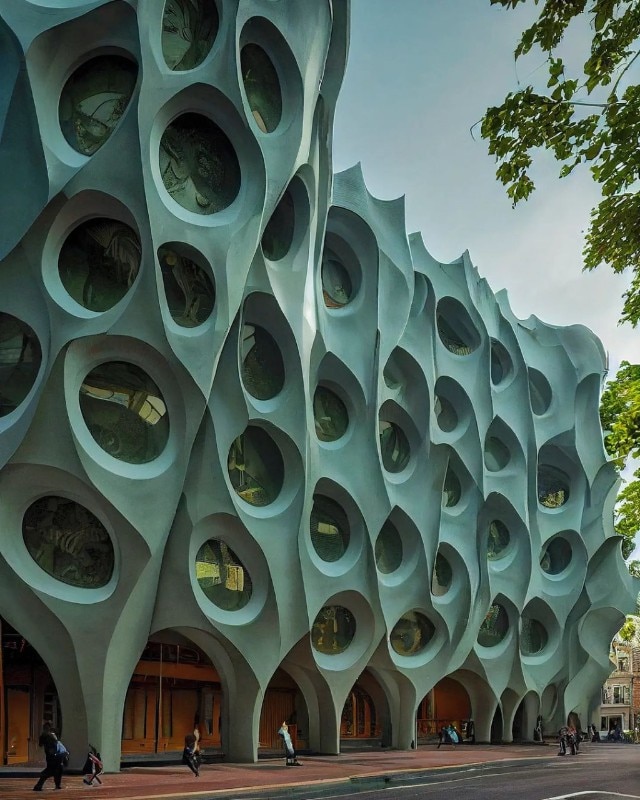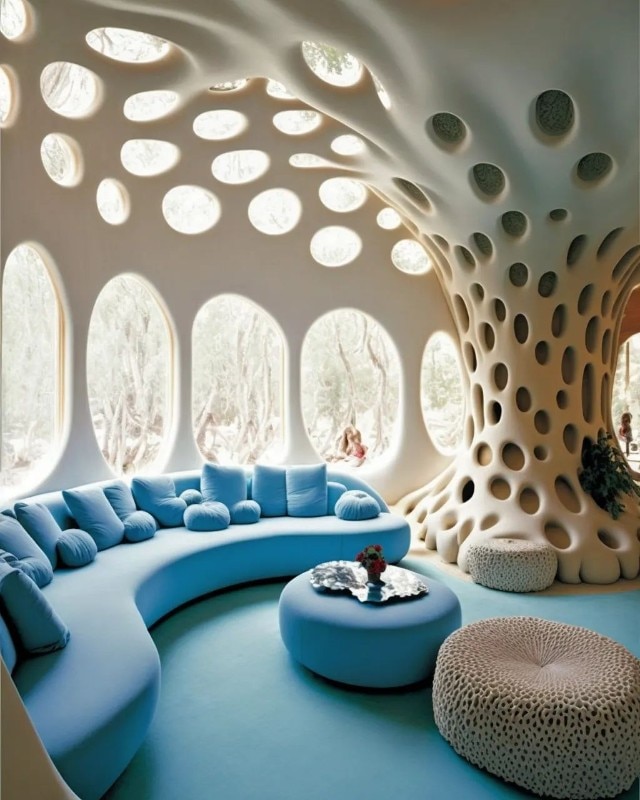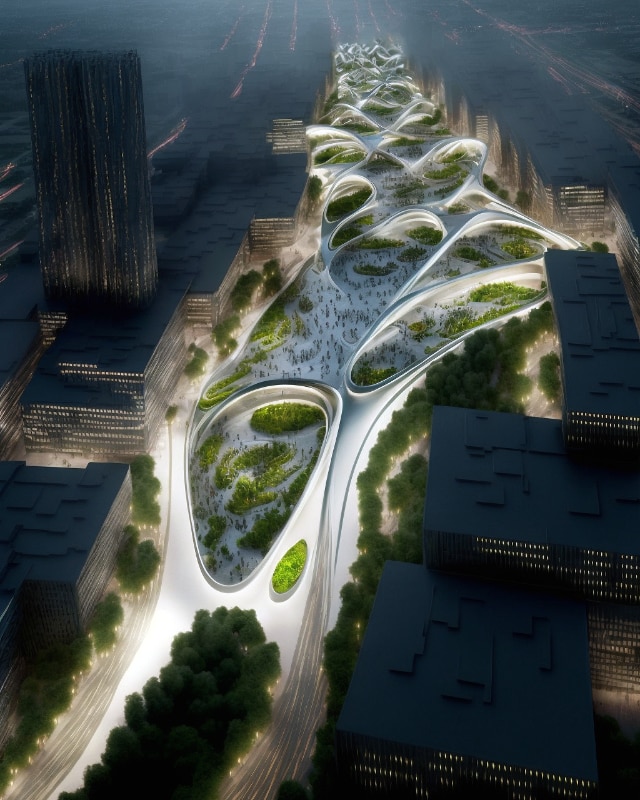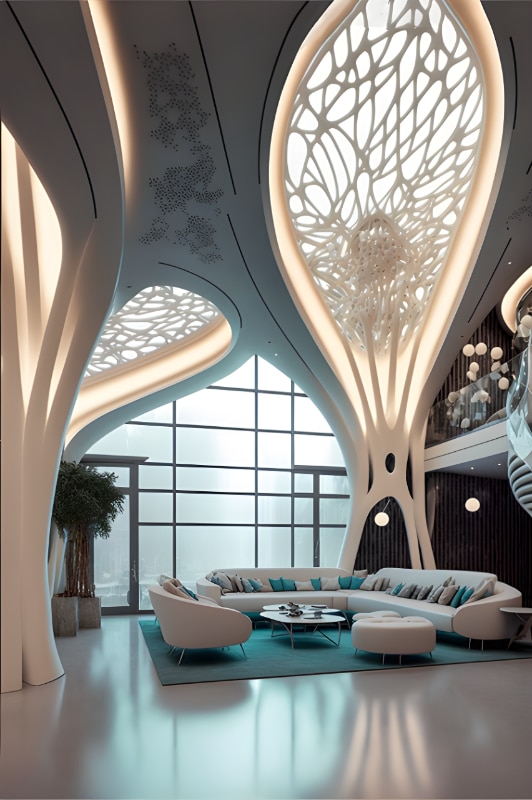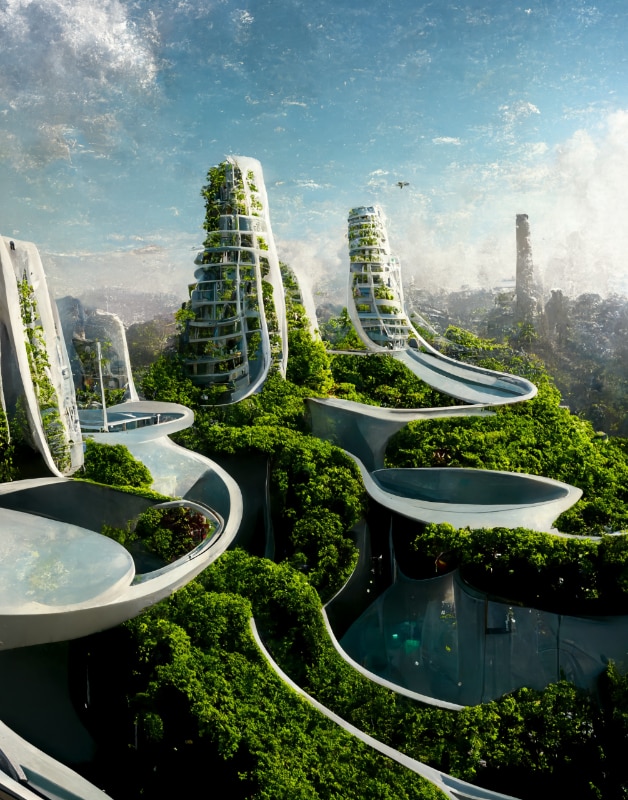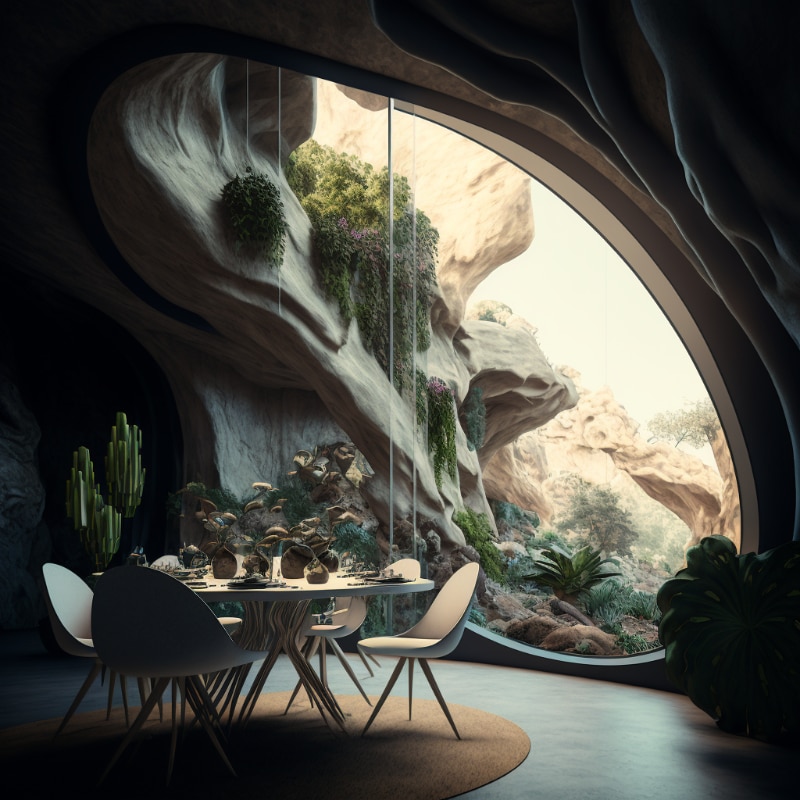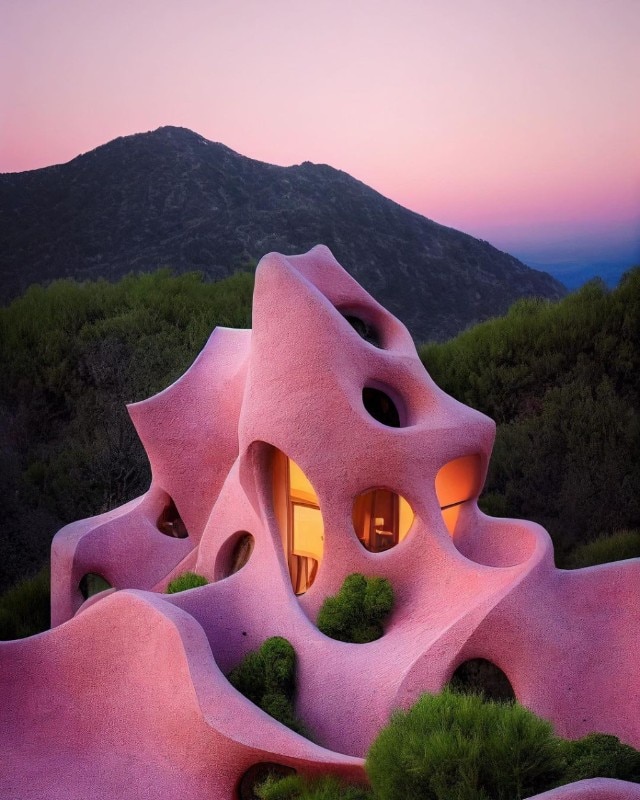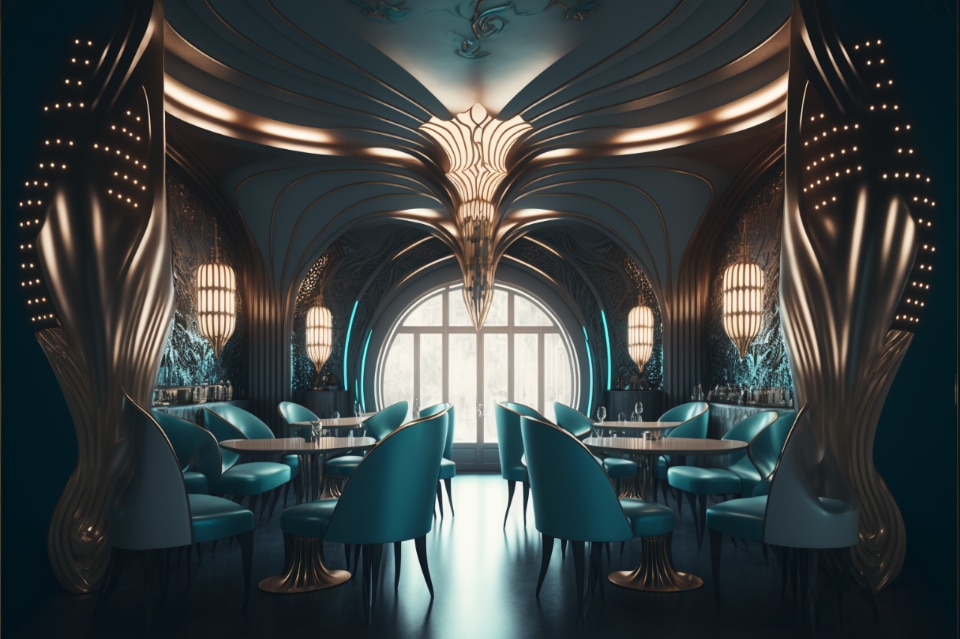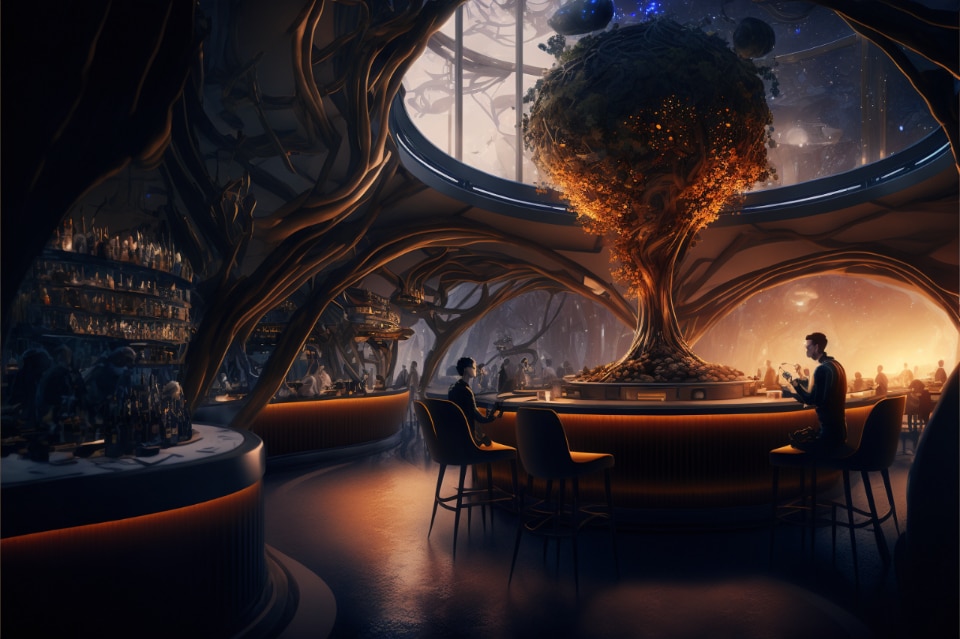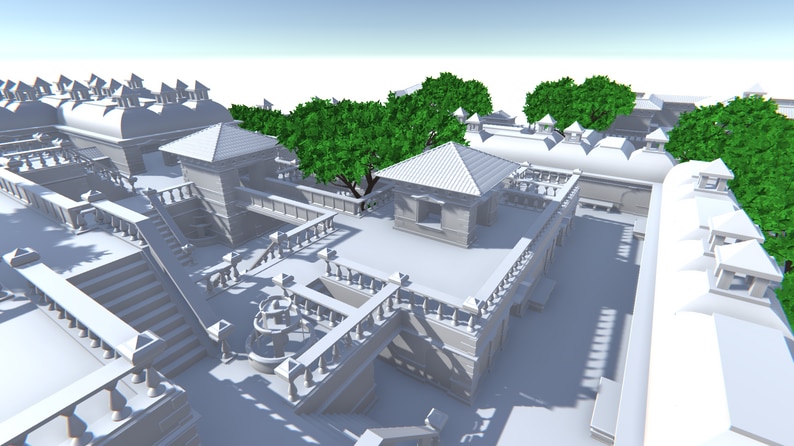New images have started to appear on Instagram in the past few months, images of buildings with sinuous shapes, organically emerging and immersing in green hills and exotic flowers, mausoleums with fractal columns that are so detailed that seemed to be sculpted in butter, hotels that emerge from water and take the appearance of glass and ice, houses that become crows and ducks, surrealistic villas suspended in the air that not even Frank Lloyd Wright would have had the audacity to design, and the “Architectural beings,” Hassan Ragab’s buildings that seem to be dancing into life.
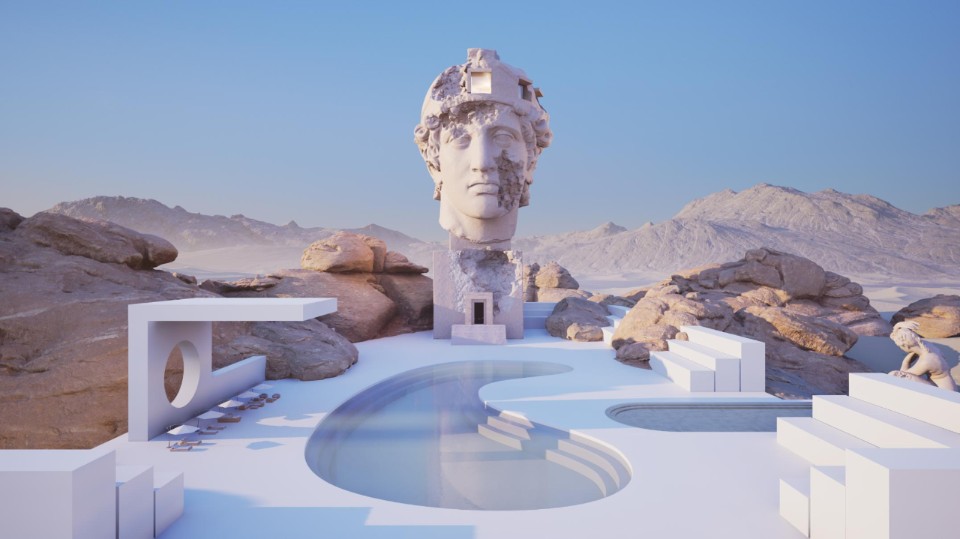
These are the new impossible architectures, and they are all created entirely digitally. We can find them on the Instagram accounts of artists such as Gaudism, Joe Mortell, Tim Fu, Manas Batia, Six N. Five, or on dedicated profiles like parametric.architecture, ai.arch.itecture, designmidjourney.
It is as if the design world has suddenly started to dream in digital.
Even big architectural firms have devoted their energy to the research on architecture for the metaverse, taking advantage, for example, of the access by invitation only to the AI-powered design software such as Dall-E: that’s what happened with “Architecting the metaverse” by Zaha Hadid Architects and Refik Anadol Studio. In other cases, big names of the real estate market have backed and financed the realization of statue-like buildings that at present would be unrealizable, like the metaverse museum “The Row” by Every Realm.
It is as if the design world has suddenly started to dream in digital. Yet, when taking a closer look at these buildings, they do not seem overtly impossible, like Escher’s or Piranesi’ stairs; they seem more of an extreme challenge, the coherent continuation of a path started over a century ago.
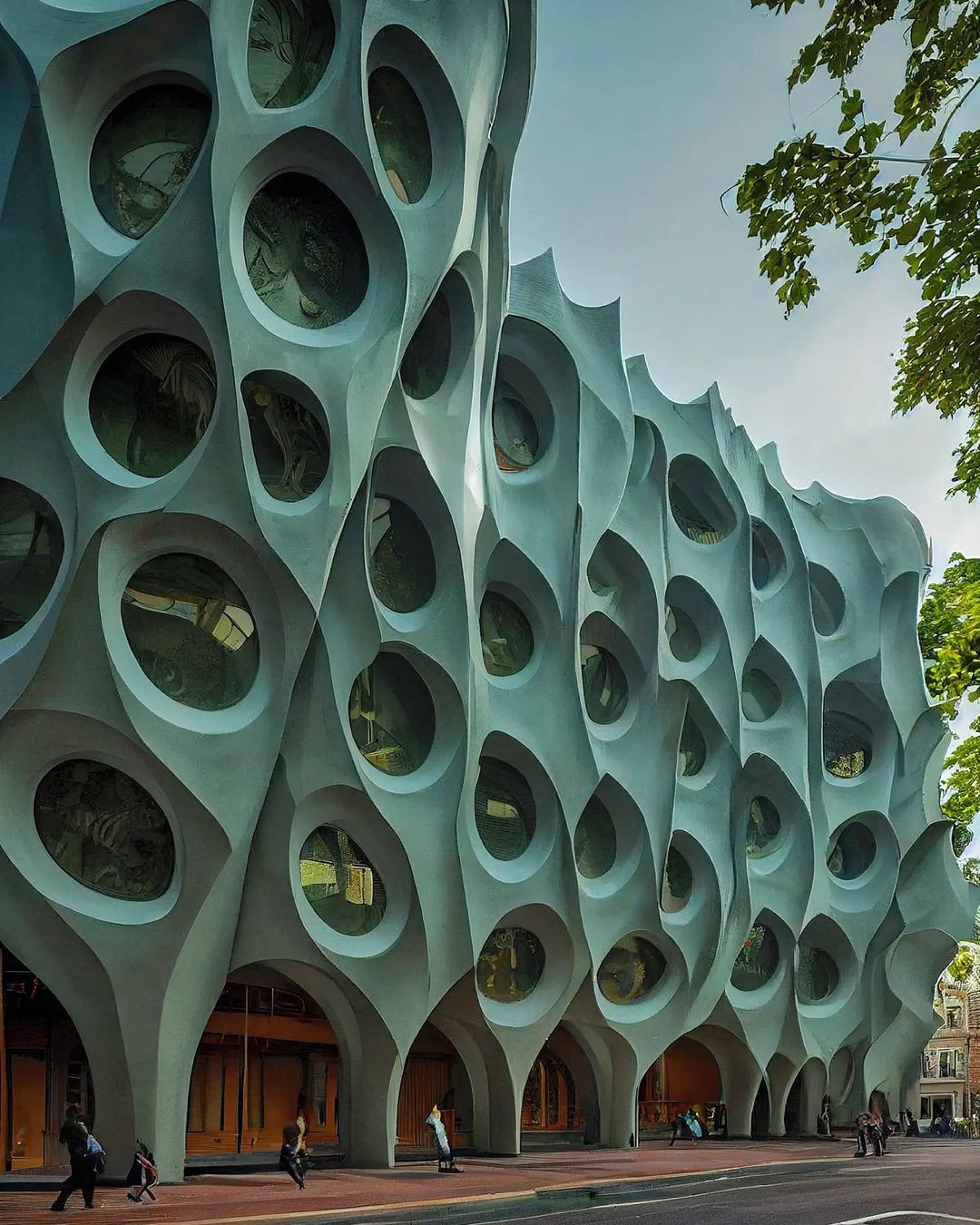
Generative and parametric design, the application of a random function, and the rendering created with the help of “text-to-image” (TTI) AI powered software are just some of the tools that architects and designers have used in the course of the last forty years while trying to think “outside the box,” as Frank Gehry would say, “face the complexity,” like Shajay Bhooshan from Zaha Hadid Architects (ZHA) reminds us, and finally free themselves from “human” design, like Tim Fu and Mana Bhatia explain, two architects who work respectively for London’s ZHA and Ant Studio a Noida (Nuova Delhi) and were in charge of the prompt crafting of DALL-E 2, MidJourney and Stable Diffusion.
It is well known that when the Guggenheim Foundation commissioned Frank Gehry the realization of the famous Bilbao Museum, Catia, the advanced 3D modeling design software for the aerospace industry, had just been acquired by IBM. The commercialization of the software together with the sudden drop of the price of titanium on the Russian market are the two great variables that make possible the construction of that ethereal and alien marvel that has not a single flat surface and a variation of curve lines that only a brain that can compute on large scales can design.
The same goes for the parametric design projects realized throughout the years by Zaha Hadid and ZHA, as Shajay Bhooshan, head of ZHA’s computation and design research group, tells us. An architecture that considers a complex information network that characterizes the habitat of our current society and its digitally augmented superstructures, continues Bhooshan, “would not be feasible without a full embrace of digital technologies.”
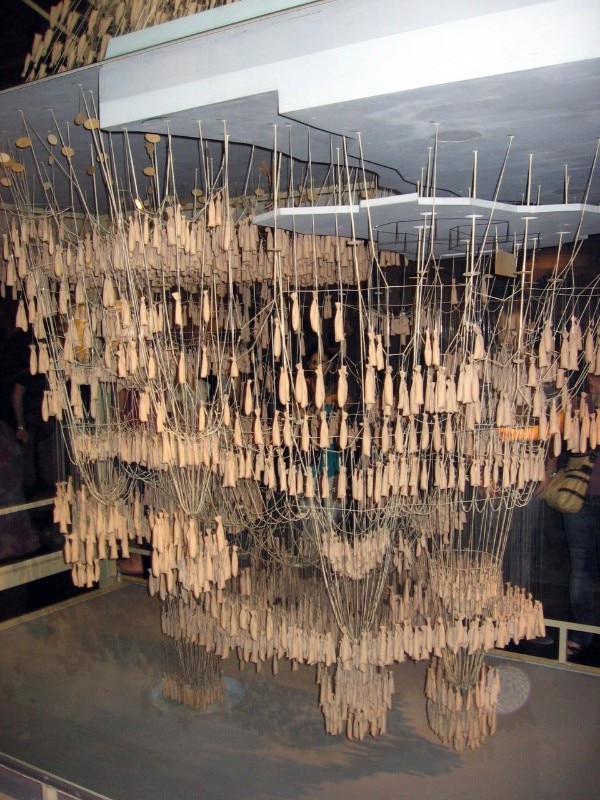
Recalling how everything started with an 1883 analog model made of ropes, weights and counterweights is certainly romantic. An upside-down scale model of the Sagrada Familia designed by Antonio Gaudí to calculate to the millimeter the cathedral’s complex system of architraves. But at the same time the players involved have become the most diverse. Today, firms and studios like ZHA rely on “building a dense network of academic, scientific, and designer collaborators, engineering consultants, technology start-ups, software vendors.”
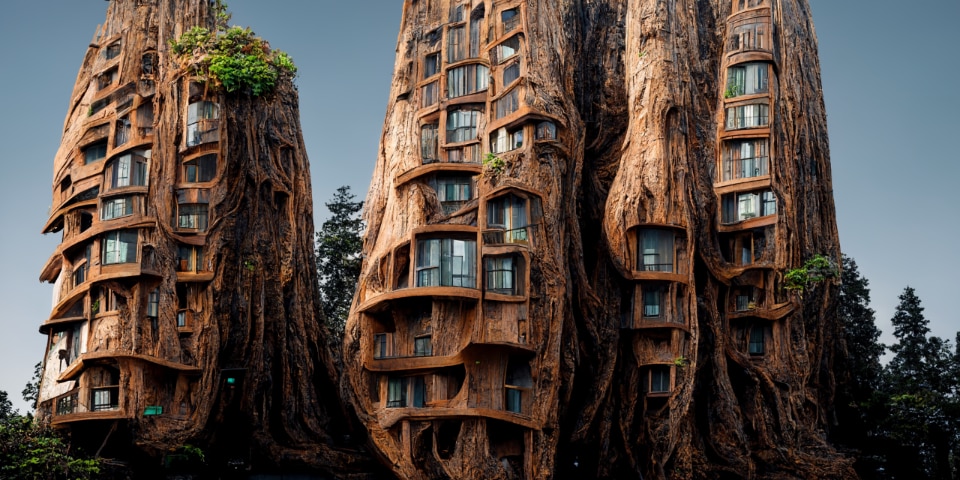
If the dataset is limited or homogeneous, the images produced by the software may not accurately reflect or respect the diverse cultural styles and values that exist in the world.
To spatial physics, Bhooshan counterposes “the laws of ‘social physics’,” that “remain the same regardless of whether the spaces are virtual or physical.” And so, if projects like “The Row” by Every Realm, warden of the digital architecture designed by Daniel Arsham, Misha Kahn and Six N. Five, and like “The Shipping,” the collection of impossible furniture by Andrés Reisinger, have been betting on the free experimentation beyond the law of physics for some time, ZHA, which has already been trained on digitalizing social streams, prefers to trace the a continuum between what is tangible and what is virtual, “to start with a vocabulary of what is known to work,” because it has been observed in the physical spaces.
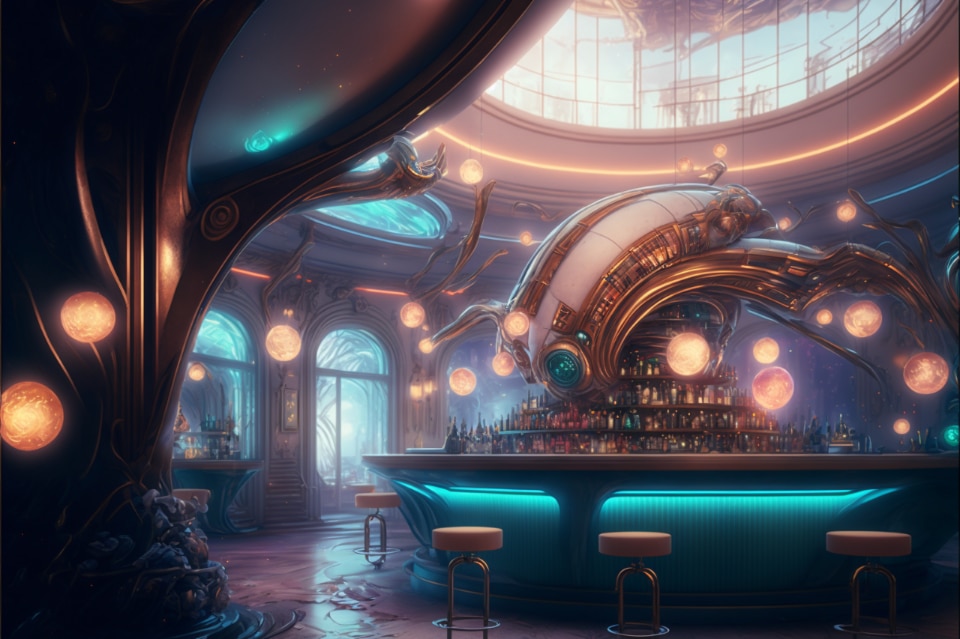
As many other firms and freelance designers, even ZHA has been devoting part of its research to 2D-space renderings thanks to artificial intelligence. Architects and researcher Tim Fu, member of ZHA Code, ZHA "computational research group,” tells us more about this matter: "A branch of parametric design I specialize in is called 'generative design', where you write equations of behaviors and let it ‘play out’.”
A system that has been used for some time both in the agent-based design (the design and simulation of complex behaviors of entities and single or various objects through a computational model) and in the fractal systems. These often result in unforeseeable and interesting morphologies,” just like it happens in his prompt crafting activity, in other words researching which texts and commands can help the TTI AI to create an architectural rendering.
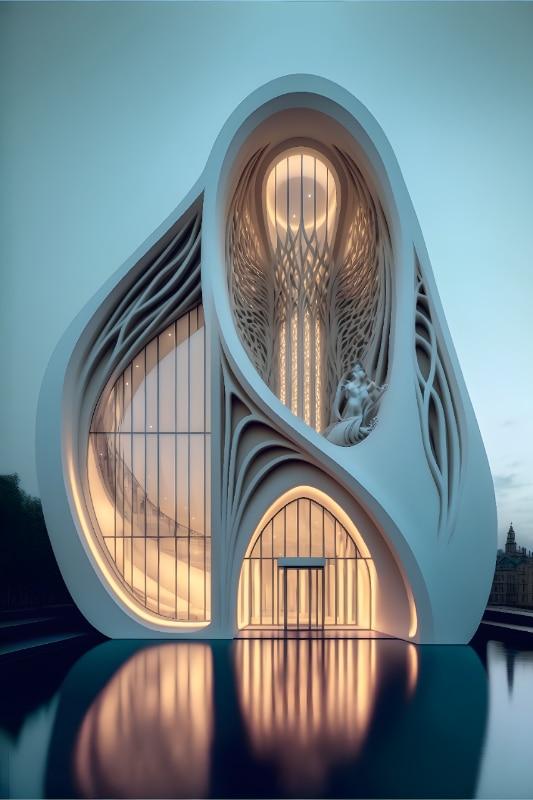
“Tools like MidJourney reduce the time taken by the designer from thinking about a design to creating a visual output;” and with the AI, Manas Bhatia tells us, “One doesn't need to go the conventional way of sketching, to 3D modeling to rendering.” At present the use of TTI AI is limited to “making mood boards and presentations, as to enhance already existing designs as well,” says Bhatia, but Fu confesses that he is actually busy with an “ongoing research collaboration with a construction company with the aim to produce such a project. Its early stage and no details can be released yet.”
Fascinating challenges that hide infrastructures as insidious and complex as those that they seek to design. Following how through the TTI rendering the parameters set at the beginning by the designer are geared towards outputs whose unpredictability doesn’t merely depend on random aspects, such as the Perlin noise or the T-spline diamond-shaped pattern variables. The starting TTI dataset that the various proprietary software offer today are a highly significant variable over which the designer, unfortunately, has no control. The dataset "acts as the foundation upon which the software generates images, and it influences the style, look, and feel of the images produced,” warn Bhatia, “if the dataset is limited or homogeneous, the images produced by the software may not accurately reflect or respect the diverse cultural styles and values that exist in the world.”


